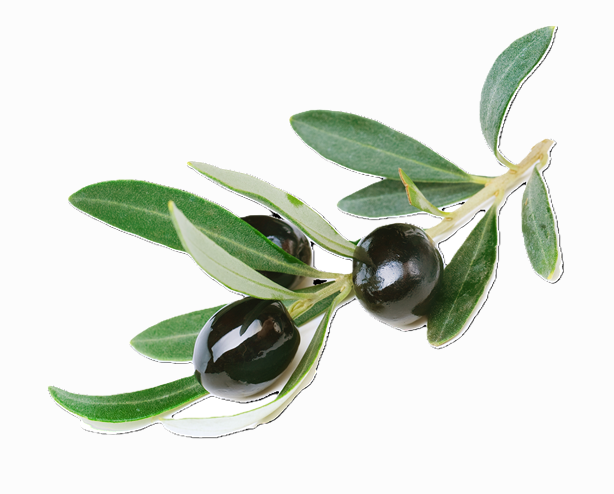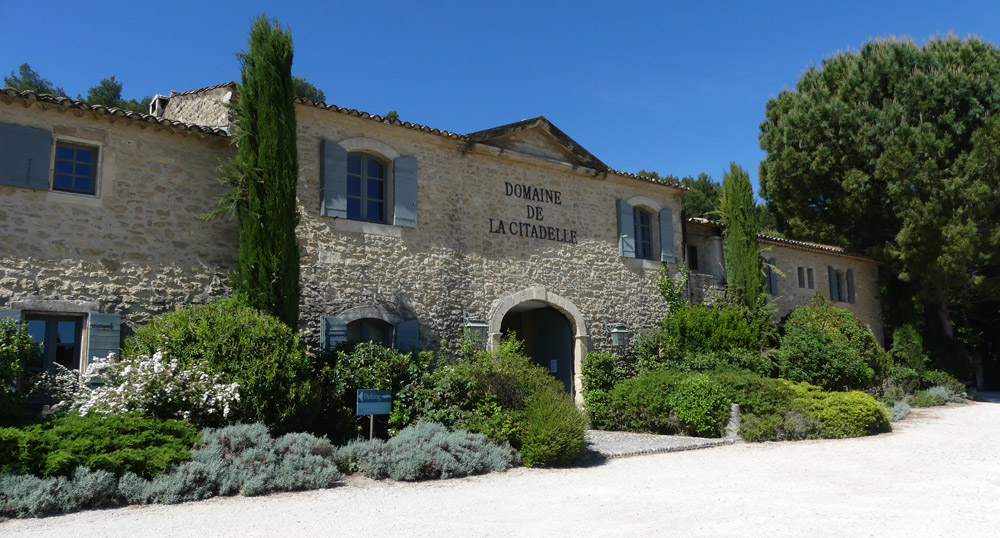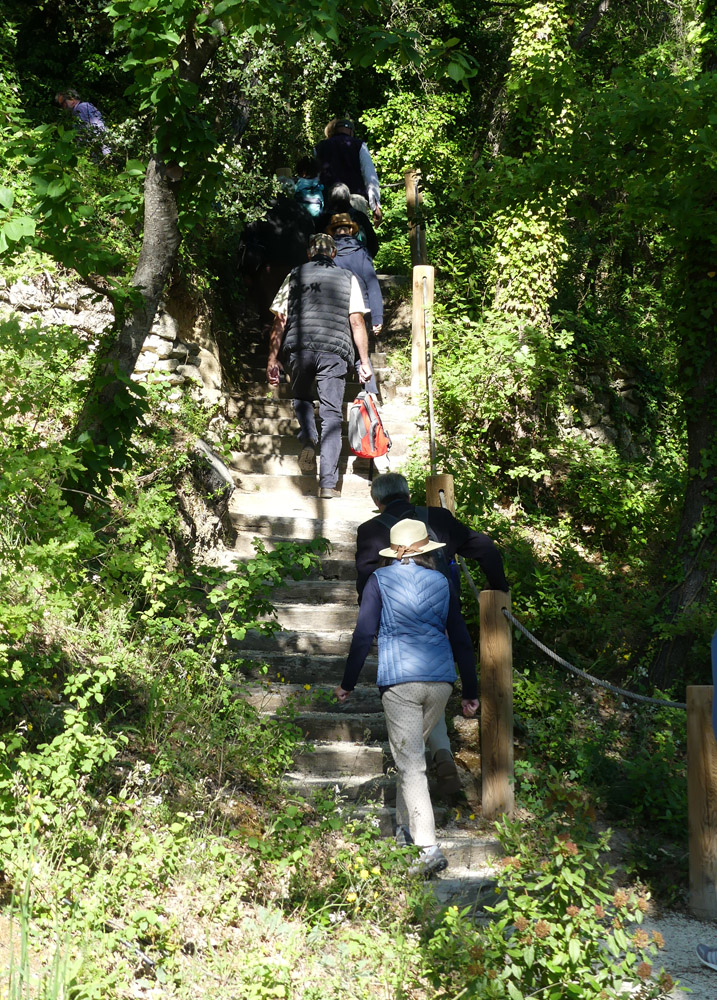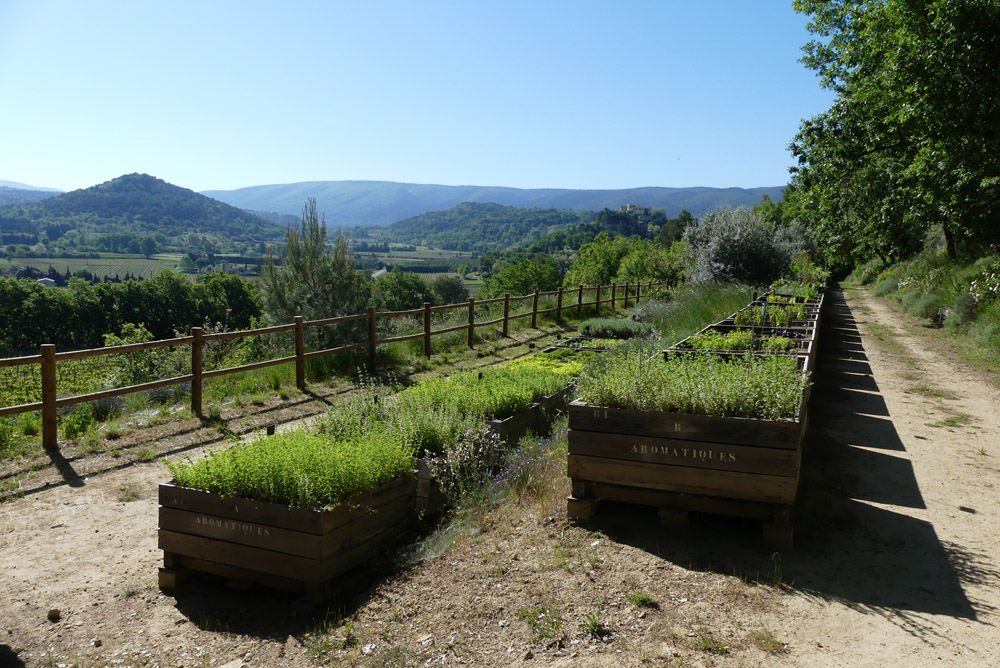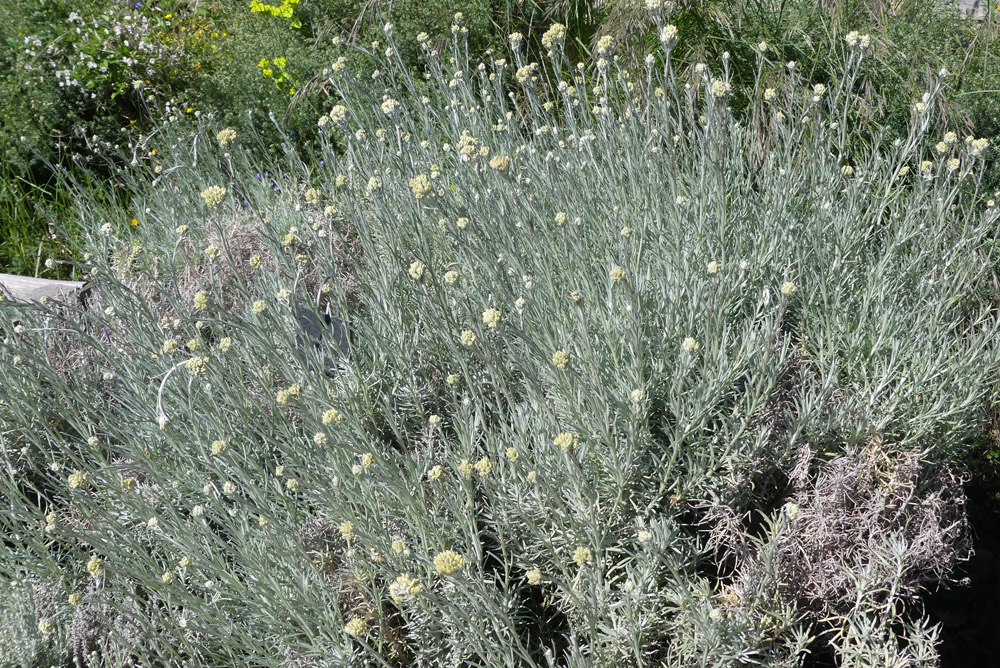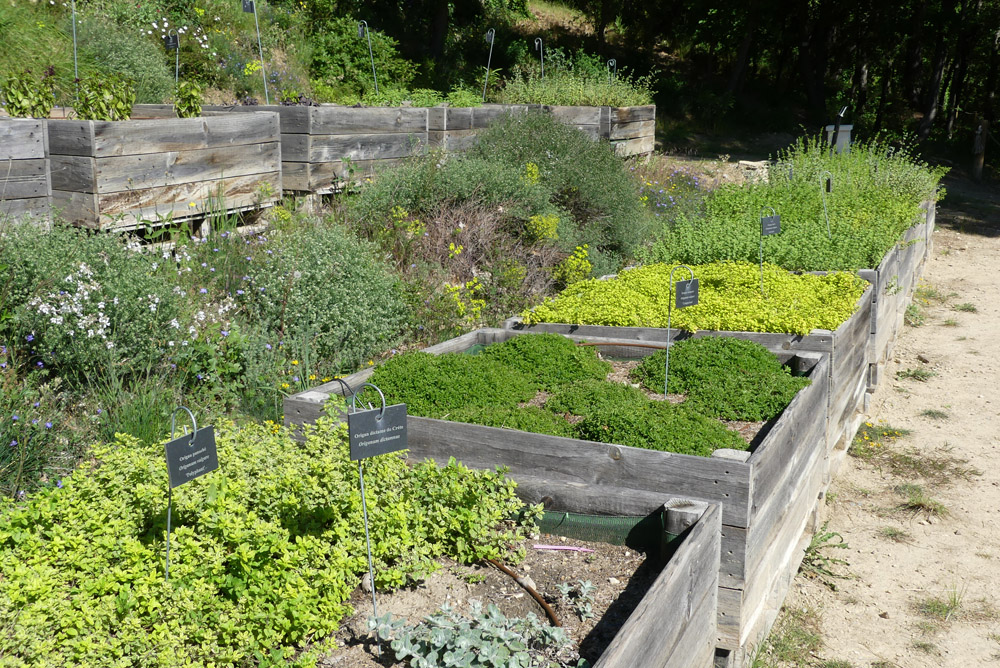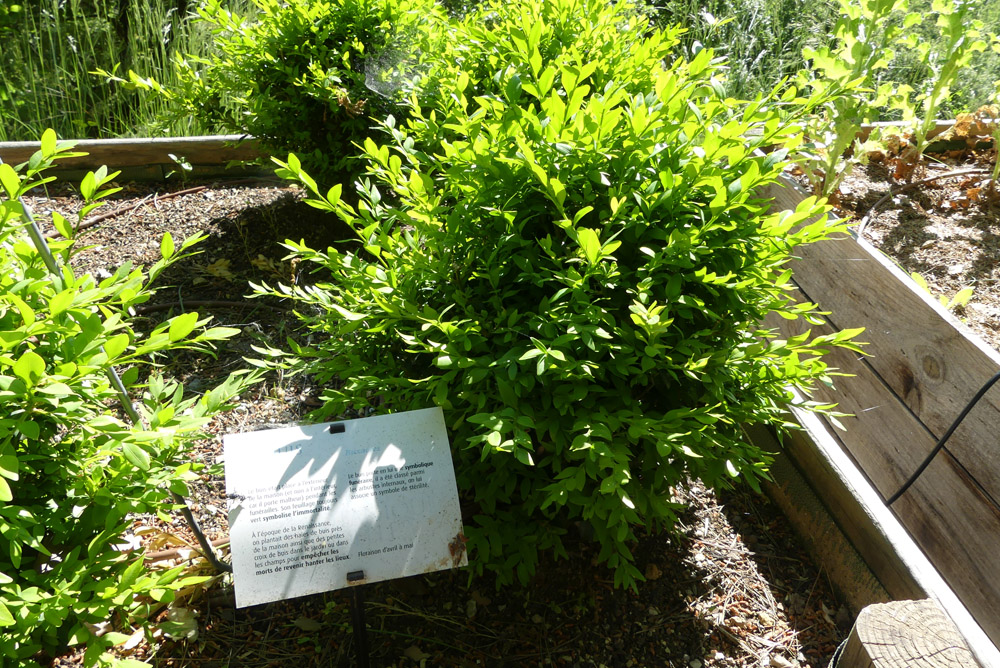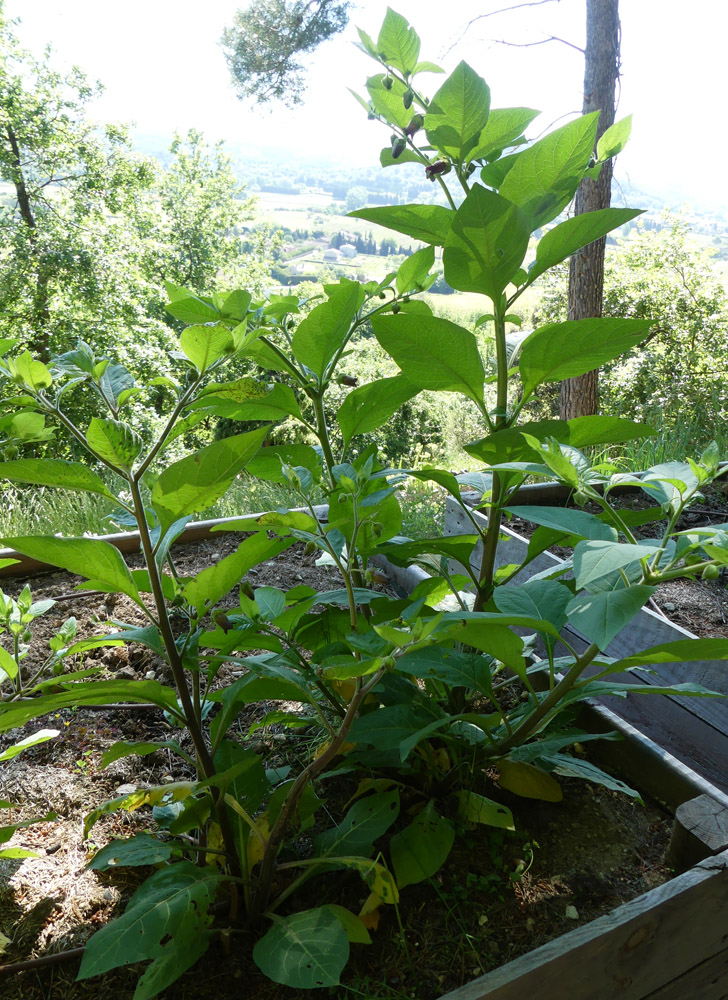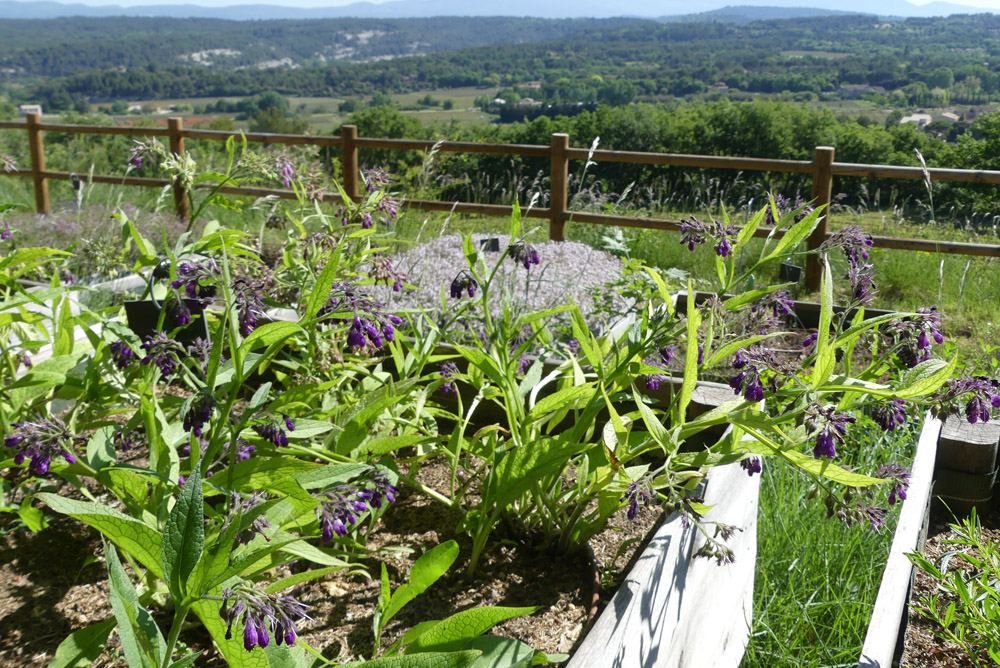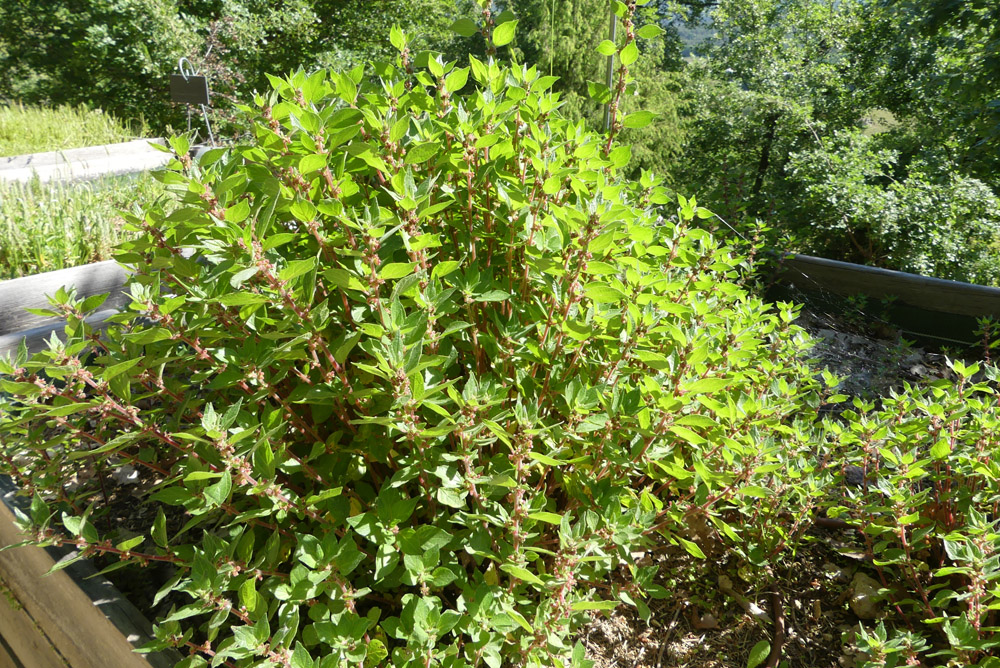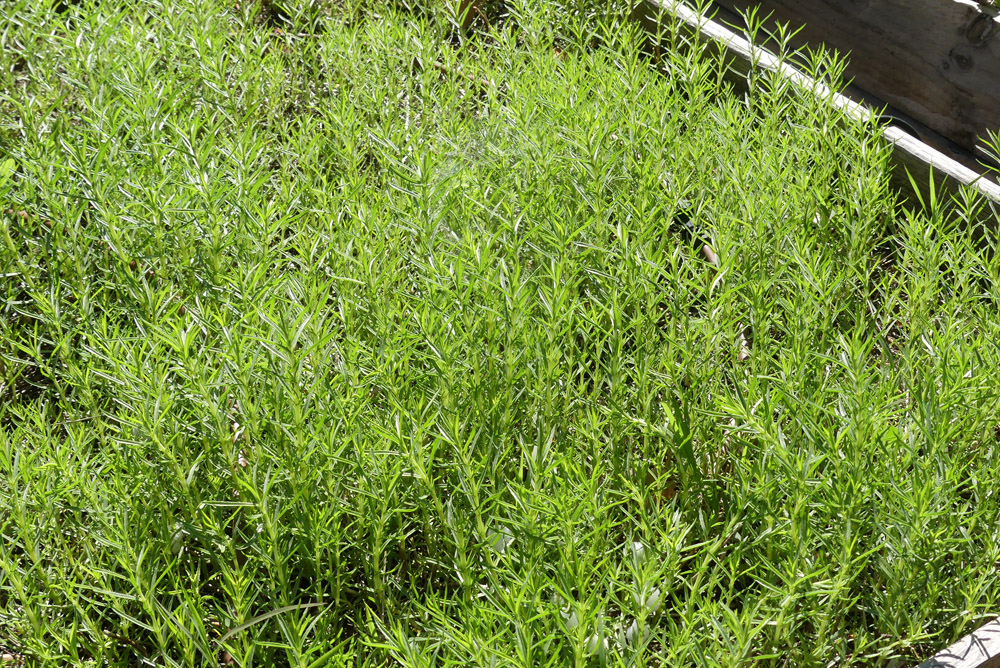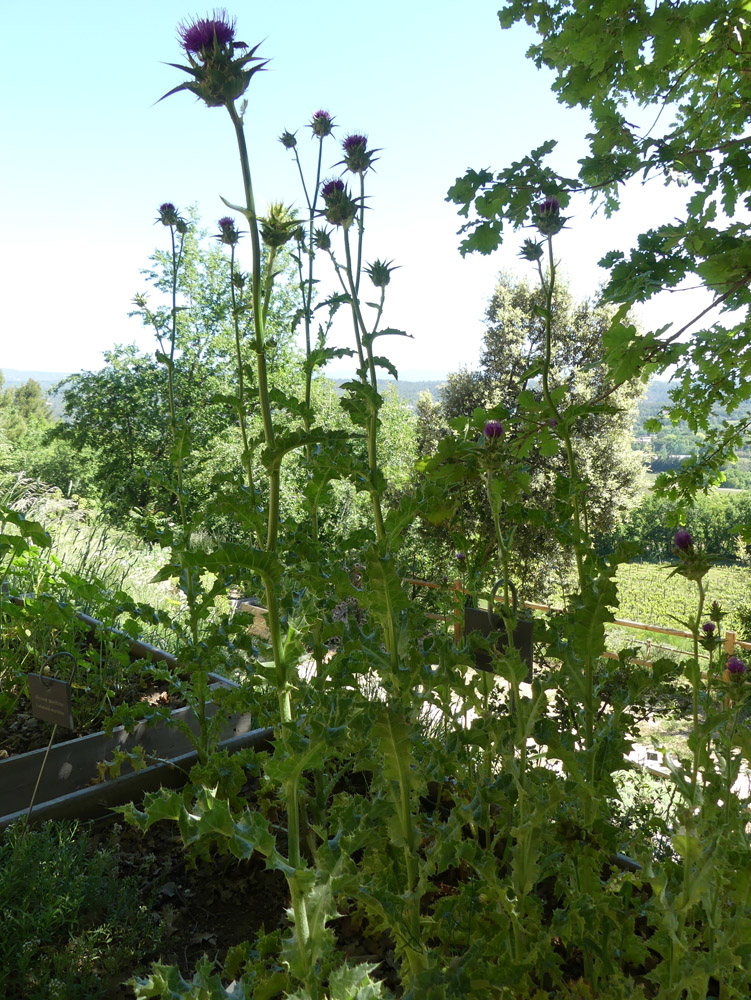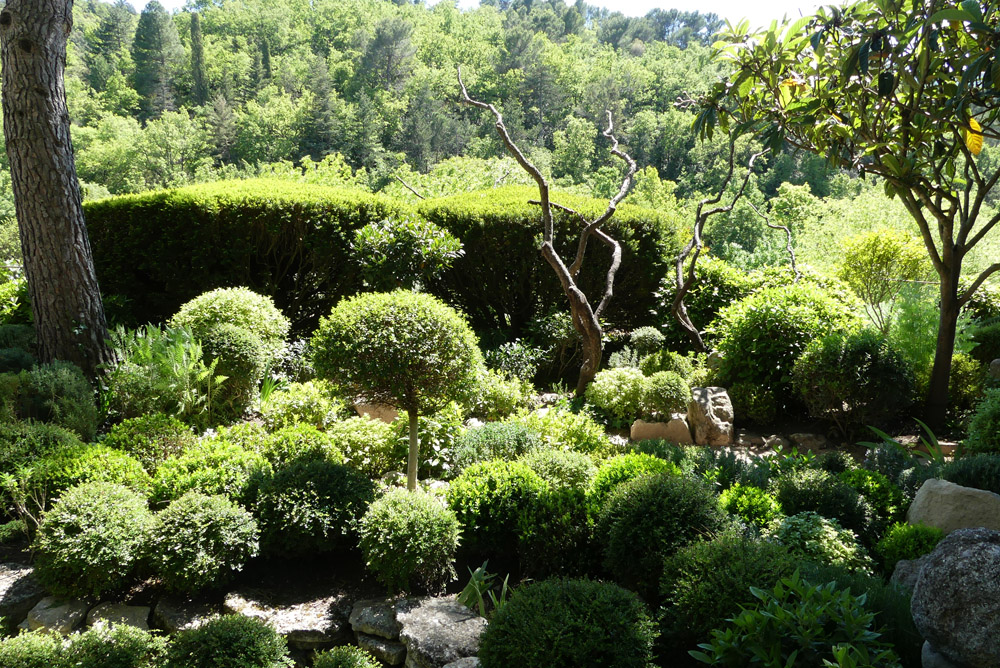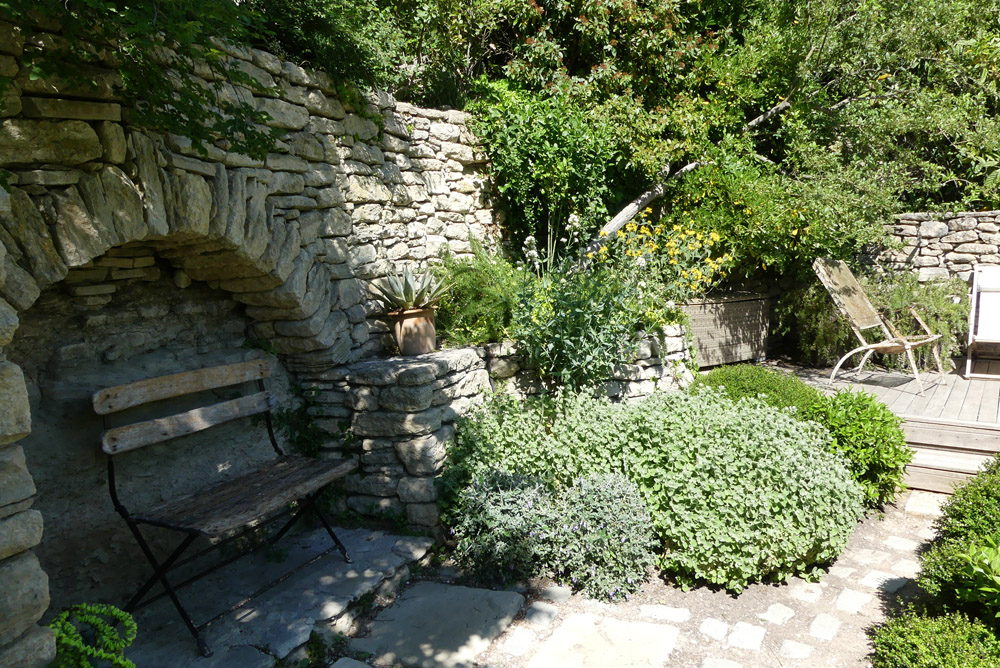May / mai 2019
A day in the Luberon / Une journée en Luberon
Click on an image to enlarge it / Cliquez sur une image pour l’agrandir
The day began at the Domaine de la Citadelle in Ménerbes, under a clear sky with hardly any wind. In the 1990s, Yves Rousset-Rouard abandoned his life in Marseille and acquired this historic domaine in order to indulge his passion: winemaking. More recently he realised his second dream, that of creating a botanical garden. Overlooking the surrounding countryside, six terraces (restanques), which date back to the 18th century, have been planted with hundreds of wild plants, grouped according to their properties: aromatic, medicinal, magical and edible.
Aujourd’hui, le mistral ne souffle presque plus et c’est sous un ciel limpide que nous démarrons notre journée au domaine de la Citadelle à Ménerbes. Dans les années 90, Yves Rousset-Rouard quitte sa vie sur Marseille et acquière ce domaine historique pour vivre sa passion : la viticulture. Depuis peu, il a réalisé son deuxième rêve, celui de créer un jardin botanique. Sur six restanques datant 18ème siècle, des centaines de plantes sauvages, aromatiques, médicinales, magiques et comestibles font fasses au paysage environnant.
Our guides were Nadine Maffli, President of the association, ‘Le Silène et l’Ortie’ and Brigitte Bergeron, President of the association, ‘Un savoir oublié’. Both passionate about wild plants, they explained the strong links which have existed between mankind and plants for thousands of years, from the observations of early man to current scientific research. We also learned about the symbolism of plants, the beliefs that man has held in relation to them, as well as their therapeutic properties and their use in cooking. Our five senses contributed to our discovery of their wide diversity: the noise of the common white (bladder) campion (Silene vulgaris) when the seed heads are beaten against the back of one’s hand; the peppery flavour of ‘Hot and Spicy’ oregano; the aroma of curry from the flowers of Helichrysum italicum; the prickly leaves of the milk thistle and the intense violet-blue of the little bell-shaped comfrey flowers
Nous sommes guidées par deux passionnées, Nadine Maffli, présidente de l’association “Le Silène et L’Ortie”, et Brigitte Bergeron, présidente de l’association “un Savoir oublié”. Nous explorons avec elles le lien étroit qui existe entre l’homme et les plantes depuis des millénaires : des observations des premiers hommes à la recherche scientifique actuelle. De la symbolique et des croyances que les hommes ont entretenus avec les plantes, à leurs vertus thérapeutiques ou leurs usages culinaires. Nos cinq sens sont mis à contribution pour découvrir leur grande diversité : le bruit de la pétarel (Silene vulgaris) qu’on claque sur le dos de la main, le goût pimenté de la feuille d’origan ‘Hot and Spicy’, l’odeur de curry des fleurs d’Helichrysum italicum, le piquant des feuilles du chardon-marie ou encore le violet intense des petites clochettes de la consoude en fleurs.
The flowers of Helichrysum italicum (or curry plant) which impart their characteristic flavour to cooking, are also used in aromatherapy, for treating bruises and inflammatory pain.
Les fleurs de l’herbe à curry, Helichrysum italicum, sont utilisés en cuisine pour leur goût de curry si caractéristique et en aromathérapie pour traiter les hématomes et les douleurs inflammatoires.
There is wide diversity of oreganos: Origanum syriacum, as one might expect, from Syria, is often mixed with sesame seeds and sumac to make zaatar, frequently used in Middle Eastern cuisine. Origanum vulgare ‘Compactum’ is a powerful antibiotic; the essential oil derived from it should be used only with the advice of a professional. The peppery oregano (Origanum vulgare ‘Hot and Spicy’), really is!
Il y a une grande diversité des origans : l’origan de Syrie, Origanum syriacum, est utilisé comme condiment en mélange avec du sésame et du sumac pour former le zaatar, l’origan compact, Origanum vulgare ‘Compactum’, est un puissant antibiotique dont l’huile essentielle est à utiliser avec les conseils d’un professionnel, l’origan épicé, Origanum vulgare ‘Hot and Spicy’, dont le goût est vraiment pimenté.
Marjoram (Origanum majorana) belongs to the same family as oregano and yet its properties are very different. It has a calming and soporific effect, whereas oregano is more of a stimulant.
La marjolaine, Origanum majorana, est de la même famille que l’origan et pourtant ses vertus sont très différentes. La marjolaine a un effet calmant et facilite le sommeil tandis que l’origan est plutôt stimulant.
Box, Buxus sempervirens, is commonly associated with death and has funereal connotations.
Le buis, Buxus sempervirens, est associé à la mort et à une symbolique funéraire.
Deadly nightshade (Atropa belladonna) is associated with sorcery and evil. The entire plant is extremely toxic because it produces atropine, a tropane alkaloid which is found in several plants of the Solanaceae family, such as daturas and mandrake. Depending on the dosage it can lead to hallucinations, trances and even death.
La belladone, Atropa belladonna est associée à la sorcellerie et au malin. Toute la plante est très toxique car elle produit de l’atropine, un alcaloïde tropanique que l’on retrouve chez plusieurs plantes de la famille des Solanaceae comme le datura et la mandragore. A certaines doses elle provoque des hallucinations et des transes et à haute dose la mort.
Common comfrey (Symphytum officinale) containing allantoides which stimulate bone and skin healing, is used to treat sprains and fractures. However, one has to be careful, as it also contains alkaloids, which in high doses can be toxic for the liver.
La consoude officinale, Symphytum officinale, contient des allantoïdes qui stimulent la réparation des os et de l’épiderme, elle est utilisée pour traiter les entorses et les fractures. Attention, elle contient aussi des alcaloïdes qui à fortes doses sont toxiques pour le foie.
Pellitory (Parietaria officinalis L.), a member of the nettle family, has been known to our ancestors for a long time. It has purifying properties and is used to compensate for mineral deficiencies and to treat gallstones and cystitis.
La pariétaire, Parietaria officinalis L., serait connu de nos ancêtres depuis très longtemps d’où son nom. Elle a des propriétés dépuratives, elle est utilisée pour combler les carences en minéraux, traiter les calculs urinaires et les cystites.
White sedum (Sedum album L.) is edible.
Le sedum blanc, Sedum album L. est comestible.
Hart’s pennyroyal (Mentha cervina) is one of the numerous species and varieties of mint.
La menthe des cerf, Mentha cervina, est l’une des nombreuses espèces et variétés de menthe.
The entire milk thistle plant (Silybum marianum L.) is edible, from the root to the flower buds. However, a certain patience is required to remove all the spines from the leaves before cooking them.
Dans le chardon-Marie, Silybum marianum L., tout est comestible, de la racine aux boutons floraux. Il faut cependant avoir la patience d’enlever toutes les épines des feuilles avant de les cuisiner.
We enjoyed our lunch in the small courtyard of the domaine: wine-tasting and a picnic specially created for us, based on wild plants and herbs, freshly prepared by Romain Dumas, chef at the restaurant l’Art des Mets.
Nous apprécions notre pause déjeuner attablés dans la petite cour du domaine. Au programme : dégustation des vins produits au domaine puis pique-nique sur la thématique des herbes fraîches et sauvages préparé par Romain Dumas, chef cuisinier du restaurant l’Art des Mets.
In the afternoon we went on to Bonnieux, a charming and typically provençal village, perched on the side of a cliff. There we were greeted by Sylvie and Pascal Verger, the fortunate owners of the La Louve which they bought five years ago.
L’après-midi, nous nous rendons à Bonnieux, un charmant village typiquement provençal perché à flanc de falaise. Nous sommes accueillis par Sylvie et Pascal Verger, les heureux propriétaires du jardin de La Louve depuis cinq ans.
The garden was created in the 1990s by Nicole de Vésian, a former fashion designer for Hermès who was fanatical about gardening in general and especially about what has come to be known as the provençal style of gardening. She worked hard for 10 years to create a complex, refined and very personal work of art: a collection of terraces, living spaces and quiet corners for contemplation where stone, wood and clipped Mediterranean evergreen and silvery plants harmonise with, and blend subtly into, the surrounding countryside. In her early 80s she sold the property to Judith Pillsbury who in turn worked hard to keep the living work of art, which was already a famous garden, alive. In 2014 Sylvie and Pascal Verger took over. They are committed to preserving Nicole’s garden, extending and renewing it as necessary whilst maintaining the spirit of its creator and taking into account the climatic and water constraints of Provence.
Le jardin a été créé dans les années 90 par Nicole de Vésian, styliste chez Hermès et passionnée de jardinage, dans l’esprit des jardins de Provence. Elle s’attèle pendant dix ans à créer une œuvre complexe, raffinée et personnelle : un ensemble de terrasses, d’espaces à vivre et d’espaces contemplatifs où la pierre, le bois brut et les plantes méditerranéennes s’accordent subtilement au paysage local. A l’aube de ses 80 ans, elle vend la propriété à Judith Pillsbury qui s’investis pleinement à faire vivre ce jardin déjà célèbre. En 2014, Sylvie et Pascal Verger reprennent le flambeau et le défi est de taille : faire vivre et renouveler le jardin tout en gardant l’esprit de sa créatrice et en répondant aux contraintes climatiques et hydriques qu’impose la vie en Provence.
The garden consists of a mass of small, carefully managed spaces, on different levels, most of which look out onto the surrounding countryside.
Le jardin est composé d’un enchevêtrement de petits espaces très travaillés dont la plupart donnent sur le paysage naturel environnant.
The lavender field, situated on the lowest level, has recently been replanted. Here again, the space was designed to allow one’s gaze to wander far over the wooded countryside.
Le champ de lavande se trouve sur la terrasse la plus basse, il a récemment été renouvelé. Ici encore, cet espace a été conçu pour laisser le regard se perdre au loin dans la campagne arborée.
There are numerous shady spots, more or less hidden in the vegetation, lending themselves to rest and contemplation. Wrought iron chairs there, a weathered wooden bench here, a stone seat…
Il y a de nombreux endroits ombragés, plus ou moins cachés par la végétation propice au repos et à la contemplation. Là des chaises en fer forgé, ici un banc de bois brut patiné par le temps, là une assise en pierre de taille.
Texte et photos: Nina Guichard
Translation into English: Frances Horne
![]()
